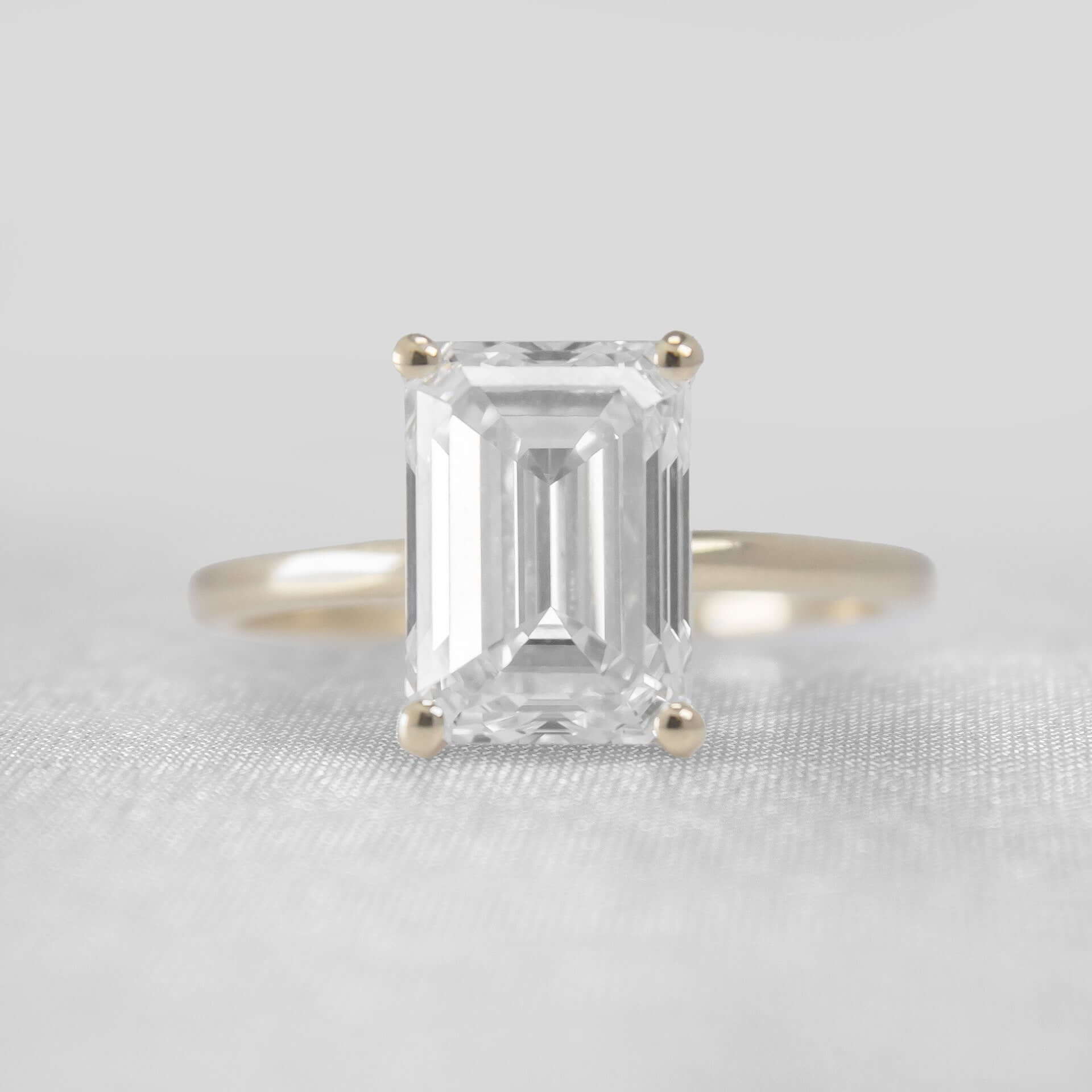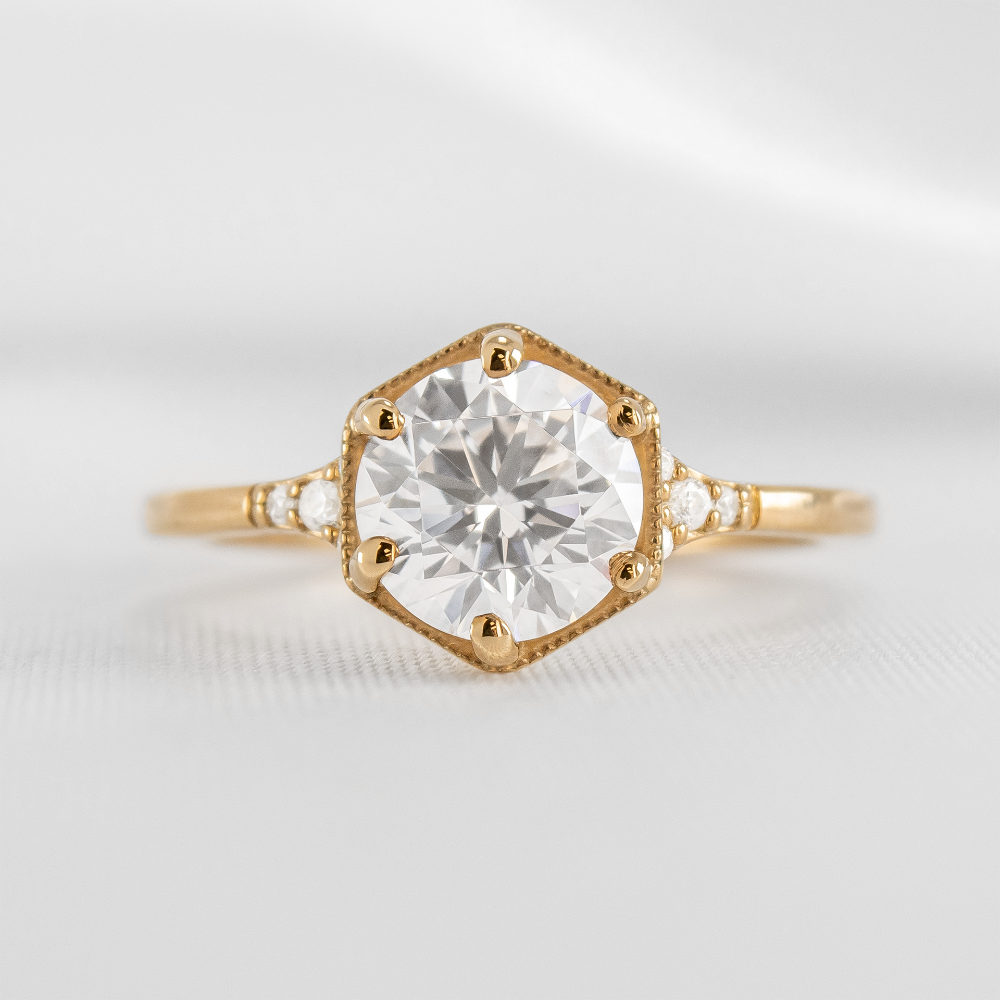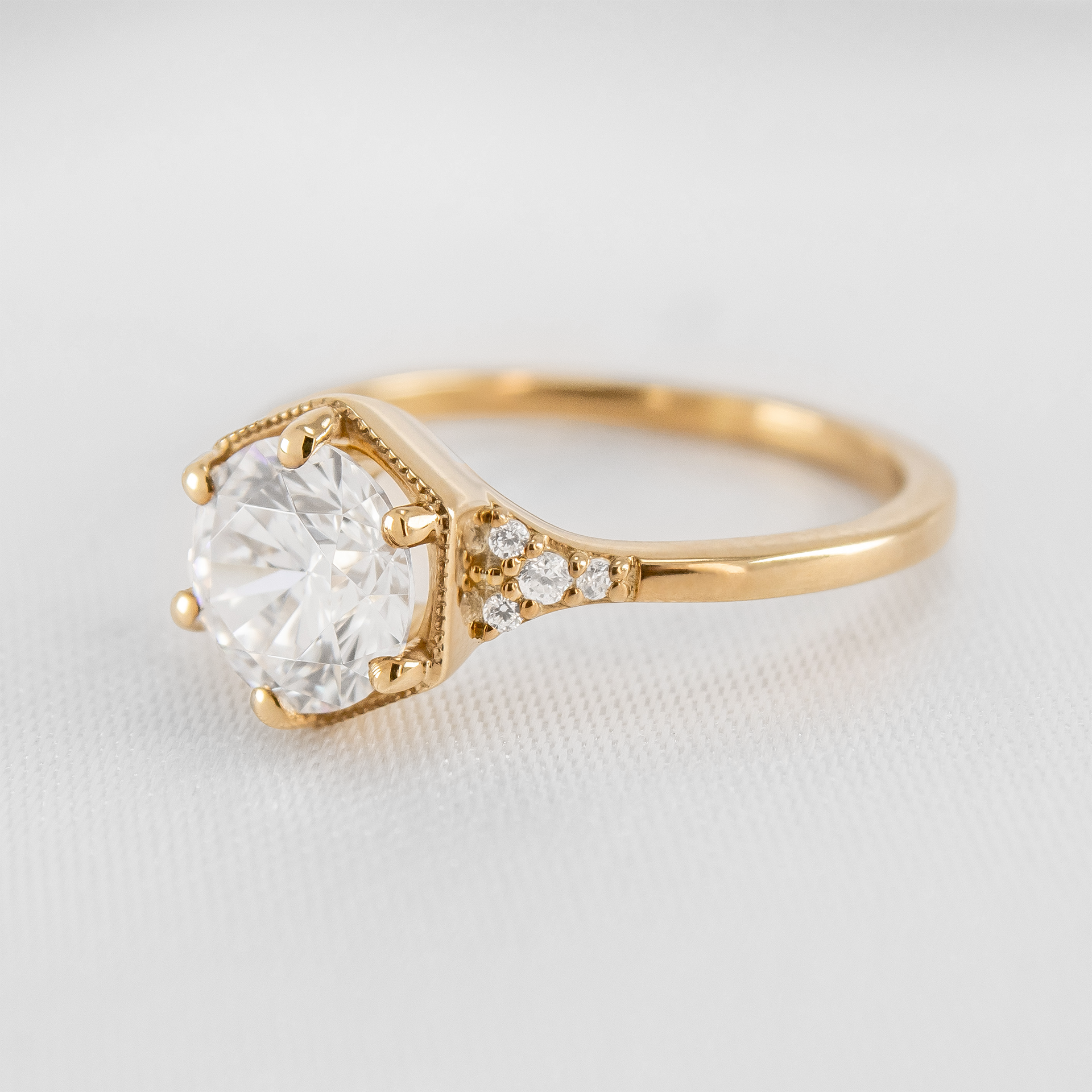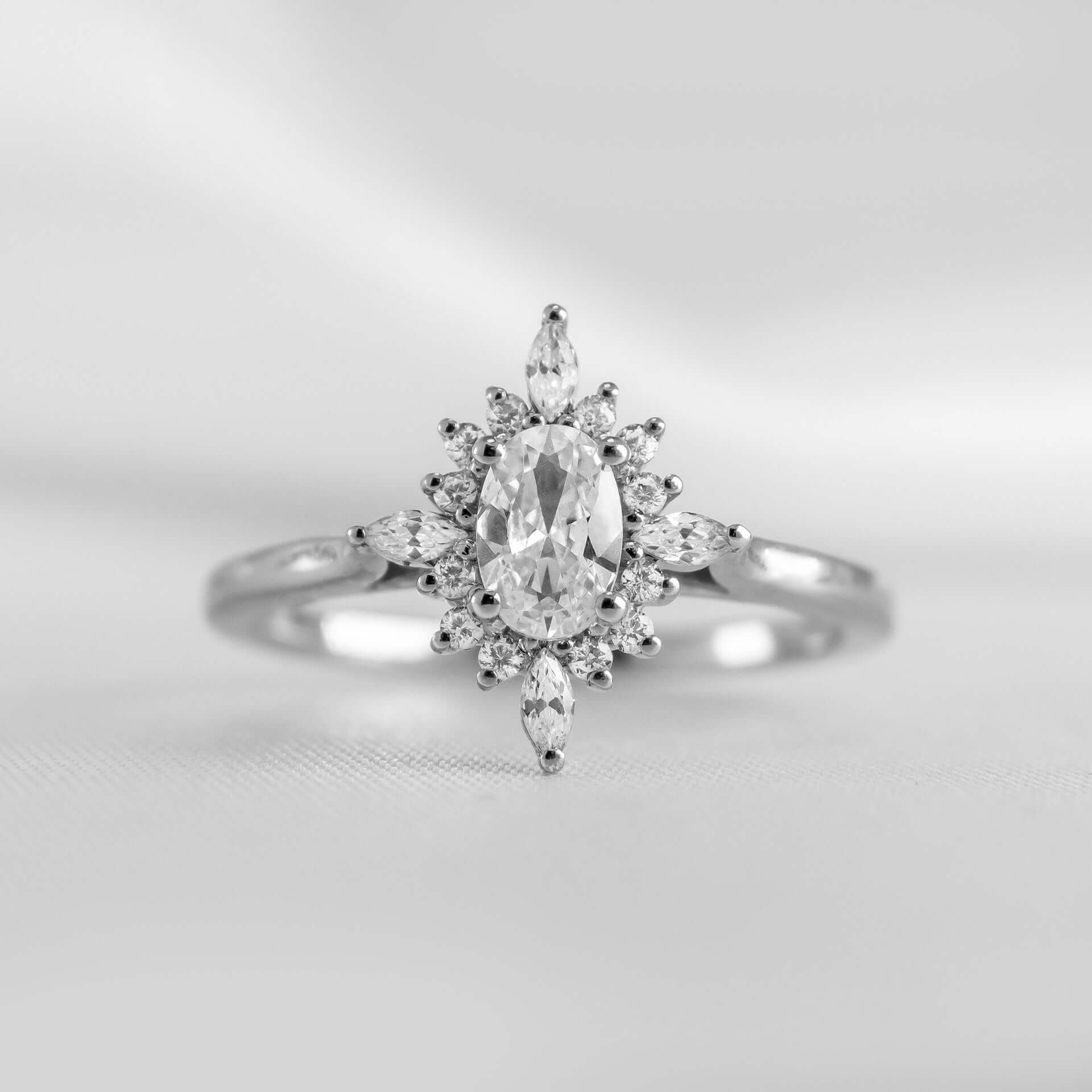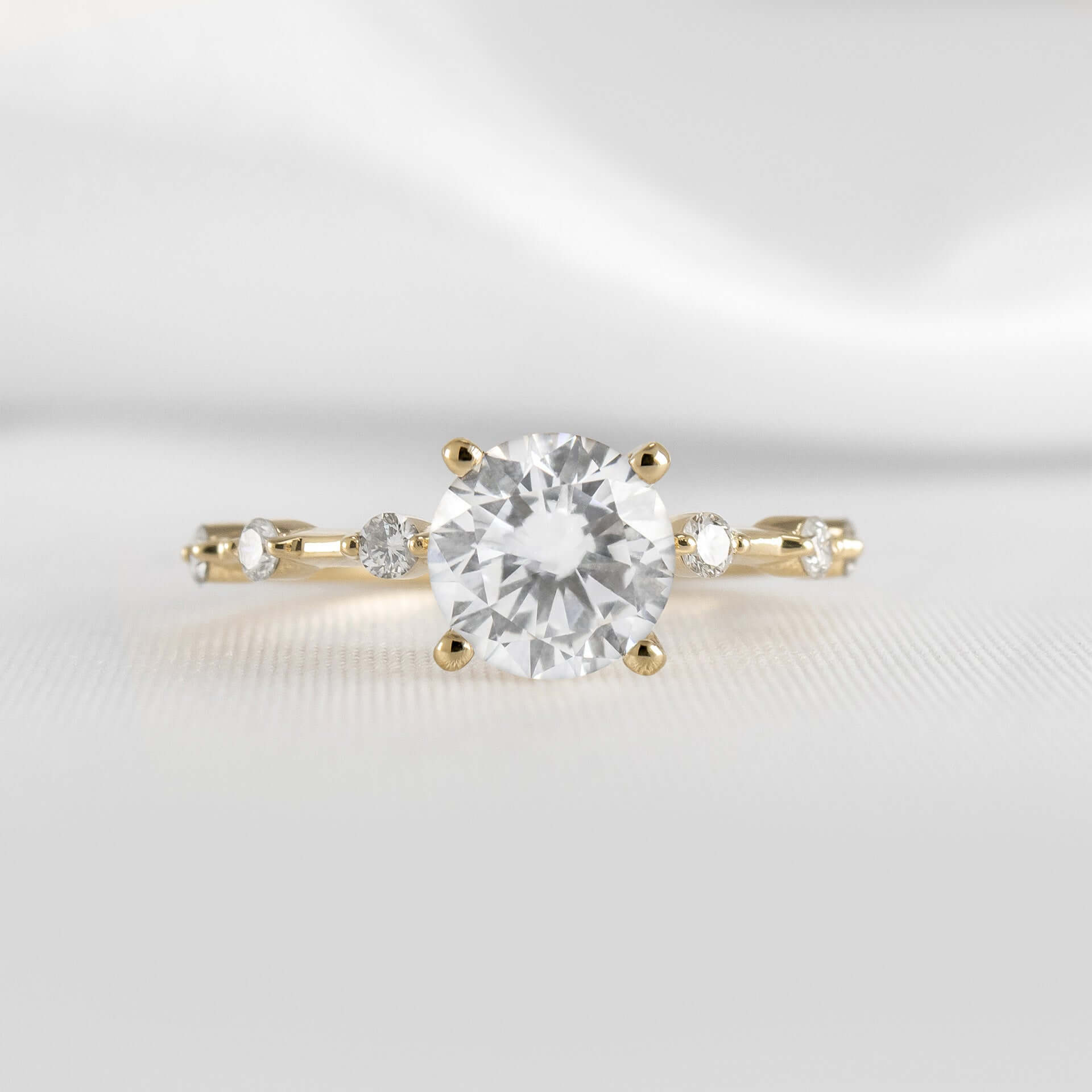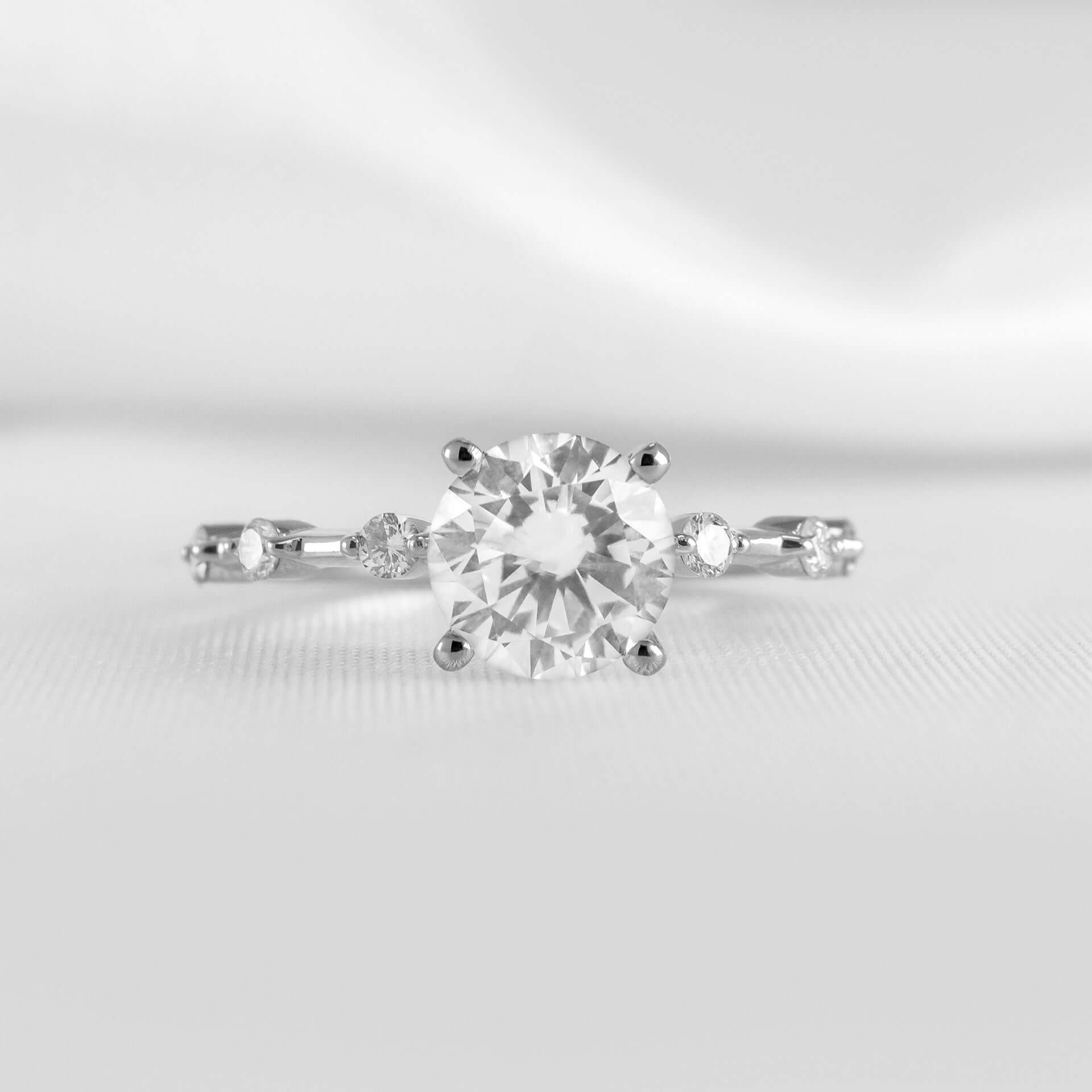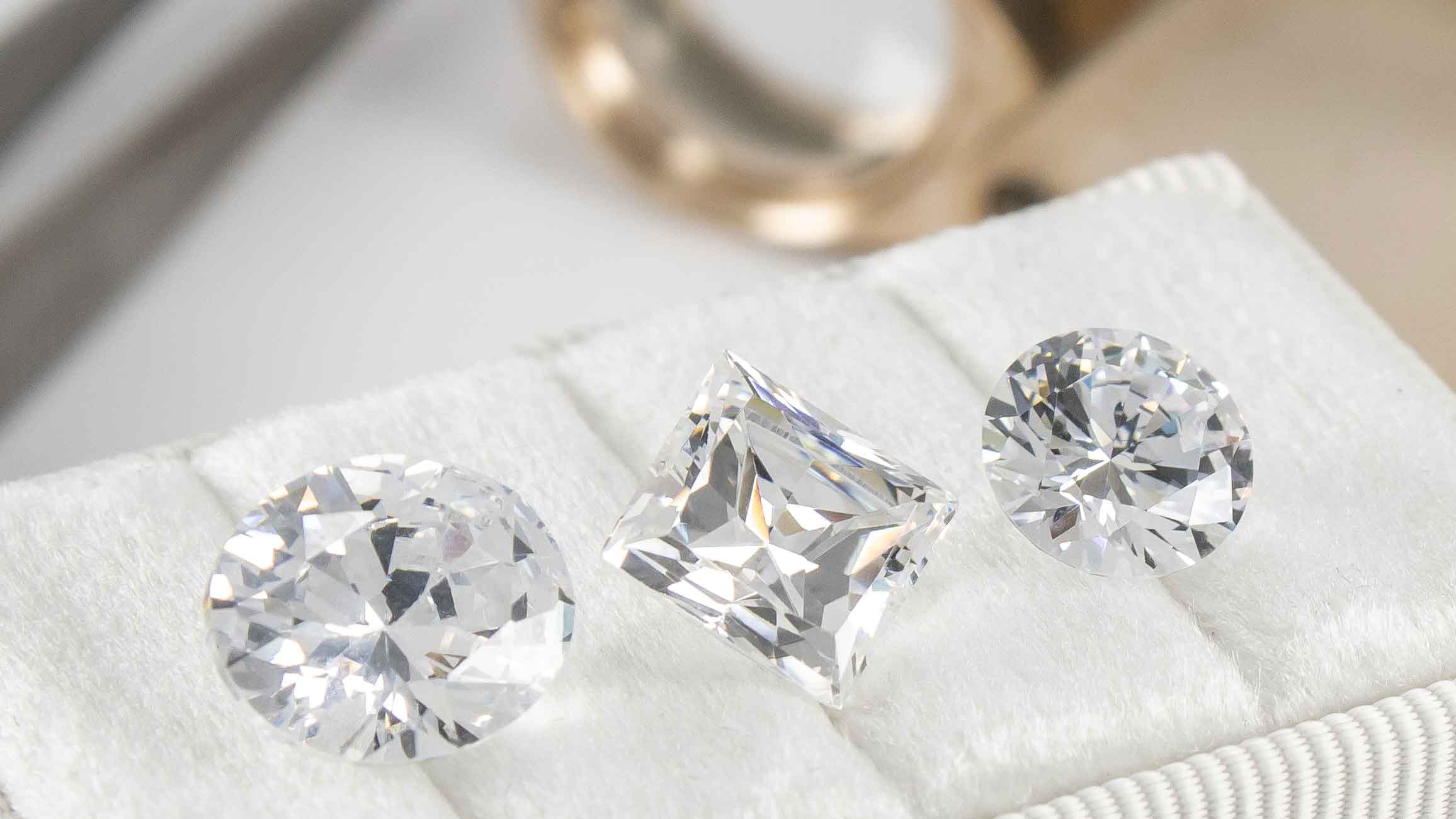
DIAMOND Proficiency
WHAT IS DIAMOND Girdle?
All diamonds have a girdle, but it varies in size and polish. Find out what it is and how it affects a diamond.
Thickness of The Girdle Affects Carat Weight
When shopping for a diamond on a tight budget, the width of the girdle plays a crucial role in determining the carat weight of the diamond. However, it's important to note that a thicker girdle does not necessarily mean a larger-looking diamond in the setting. In fact, spending money on a thicker girdle does not add any value to the stone's beauty or size. Nevertheless, a thicker girdle can offer additional protection to fancy shaped diamonds like Marquise, Heart, or Pear cuts. As a diamond buyer, the most important factor to consider is the carat weight. The thickness of the girdle conceals most of the diamond's weight, making it appear smaller. For instance, a 1.7-carat diamond with a thick girdle may look the same size as a 1.4-carat diamond with a thin girdle when viewed from the top. In such cases, the extra 0.3 carats may not be worth the additional cost if it's all in the girdle.
That’s why we are here to guide you through every step - from understanding what carat, color, cut and clarity mean, to designing the perfect ring.
The brilliance of a diamond is attributed to its high light return. Ideally, light should enter the diamond and exit through its table, dispersing as it leaves to create the dazzling shine that distinguishes a superior diamond. However, poor proportions in the cutting process can diminish the stone's light performance. For example, a girdle that is either too thick or too thin can adversely affect the diamond's ability to reflect light back out through the table at the ideal angle, resulting in a fisheye effect.
How Diamond Fire and Brilliance is Affected by Girdle Thickness
The position of the diamond's facets is influenced by the width of its girdle, which in turn affects its light performance and cut. If a diamond has an Extremely Thick Girdle, it can exhibit a lot of brightness and fire, but only if it's cut well. However, a thick girdle can cause the diamond to appear smaller from above by concentrating its weight in the center. When examining a diamond with a thick girdle, take into account its overall dimensions. If they fall within the appropriate range, an excessively thick girdle may not make much of a difference. It's important to note that girdle thickness is factored into the diamond's final cut grade, but a diamond can still be considered an Optimum cut and have exceptional fire, brilliance, and scintillation even if its width falls outside the ideal range (Thin – Slightly Thick).
Diamond Durability
When purchasing diamonds, it's important to consider durability since they're meant to last a lifetime. One feature to pay attention to is the girdle, as it directly affects the lifespan of your diamond. Diamonds with extremely thin girdles are more prone to damage and have a shorter lifespan. This is especially true for princess cut diamonds, which already have vulnerable corners. It's best to avoid Extremely Thin and Very Thin girdles for this cut. To protect your diamond, choose a setting that preserves it, such as a bezel or drill setting, if your diamond has a thin girdle.
Shop Diamond Engagement Rings
View all










